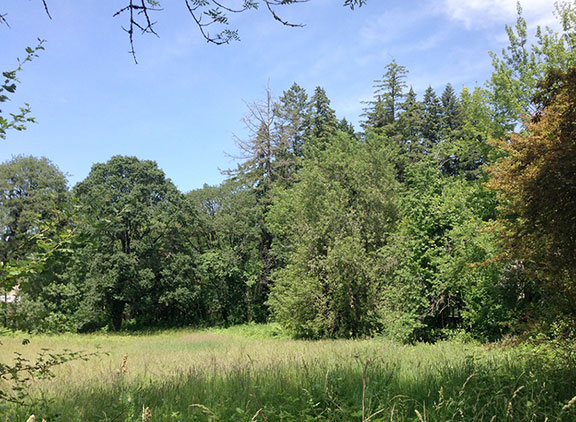State Land Use Commission issues enforcement order against Washington County

CPO 4M Press Release
The Oregon Land Conservation and Development Commission (LCDC) has issued an enforcement order against Washington County for its lack of compliance with statewide land use planning goals designed to protect significant natural resources. LCDC also went a step further and imposed an injunction on the County, prohibiting it from processing applications for developments in designated “Wildlife Habitat” until it comes into compliance with state law by adopting new and enforceable regulations to protect the resources. Under LCDC’s order, the County has until May 1, 2021 to come into compliance.
Citizens will work with the County in crafting new ordinances, ensuring that the remaining 15% of these Wildlife Habitats are protected to safeguard their existence for future generations.
LCDC’s action came in response to a petition filed by Metzger area resident Jill Warren. Along with their attorney and support from more than 120 citizens, the petitioner and six other engaged neighbors challenged the County over unchecked development in areas with sensitive environmental resources. At the center of the controversy is a proposed residential development in an area of Metzger on a property along SW Cedarcrest Street. A portion of that privately-owned property consists of a grove of mature Douglas fir trees which had been designated since the 1980s by the County as a “Significant Natural Resource” (SNR) during its Goal 5 land use planning process. As a designated SNR, the grove was subject to special protections under the County’s land use laws.

removal by development.
In 2016 when a developer proposed to remove over 70% of the Douglas fir grove to make room for new higher-end single family residences, Ms. Warren and others objected, noting that the development plan’s proposed “mitigation” for the loss of the SNR by planting new immature trees along a creek on the property could not, as a matter of basic biology, replace the lost ecological and habitat value that the grove of mature trees provided. Contacted by neighbors, the Oregon Department of Fish and Wildlife also weighed in calling the proposed mitigation insufficient to offset the loss of the grove, which provides important upland habitat to numerous species of birds and other wildlife.
Despite initially finding that the proposed development would violate County land use rules designed to protect SNRs, the County Hearings Officer approved the development application. In doing so, the Hearings Officer explained that many of the County’s ordinances relating to the protection of SNRs were invalid under the so-called “needed housing statute.” That statewide law generally requires that any rules or regulations imposed on housing development must be “clear and objective.” Historically, the needed housing statute only applied to housing development on “buildable land,” which excluded areas protected by local environmental regulations. However, in 2017, the Oregon legislature amended the needed housing statute to expand its scope to include all land, regardless of whether it was considered “buildable” or not. Because the Hearings Officer found that many of the protections formerly afforded to the Cedarcrest grove contained subjective requirements and language, they were not “clear and objective” and were therefore unenforceable under the needed housing statute.
Ms. Warren appealed the County Hearings Officer’s decision to the state Land Use Board of Appeals (LUBA) and then to the Oregon Court of Appeals, which both found that the 2017 changes to the needed housing statute had invalidated several key provisions of Washington County’s land use regulations designed to protect SNRs identified in its Goal 5 program. Despite the fact that many of its land use regulations had been invalidated by the Court of Appeals, Washington County nevertheless continued to process development applications for properties containing SNRs, often citing the Court of Appeals decisions in refusing to enforce its own regulations.
Having exhausted her judicial remedies, Ms. Warren petitioned LCDC in December 2019 to take action and force the County to come into compliance with statewide planning Goal 5 by enacting new enforceable regulations to protect its identified SNR resources. In a draft assessment prepared in 2019 at the community’s behest, the County admitted that only 15% of the remaining Goal 5 Wildlife Habitat SNRs remain “with development potential.” However, the County claimed that it was still in compliance with Goal 5 notwithstanding the invalidation of many of its land use regulations by the Court of Appeals. Specifically, the County argued that there were still other incentive-based programs to encourage developers to preserve environmentally sensitive sites, and that some of the SNRs were subject to other federal, state, and local regulations like the Clean Water Act and Clean Water Services’ riparian corridor requirements. However, a Hearings Officer hired by LCDC to look into the request for an enforcement order disagreed with the County and sided with Ms. Warren, who pointed out that other regulations cited by the County served different purposes than the SNR land use regulations invalidated by the Court of Appeals.
The Hearings Officer recommended that LCDC issue an enforcement order requiring the County to adopt new “clear and objective” regulations regarding protections for SNRs.
In it’s meeting on Friday, May 22, 2020, Oregon Land Conservation and Development Commission voted 6-0 to adopt the Hearings Officer recommendation to issue an enforcement order. The Commission also went a step further and voted to impose an injunction on the County, prohibiting it from processing applications for developments in designated “Wildlife Habitat” until it came into compliance with state law by adopting new and enforceable regulations. The Enforcement Order was issued on June 2, 2020. Under the Commission’s order, the County has until May 1, 2021 to come into compliance. In the meantime, Ms. Warren and others who have been actively involved in legal challenges to the development of SNRs in Washington County hope to work with the County in crafting the new ordinances to ensure that what remains of these sensitive Wildlife Habitat areas will be given meaningful protections.





